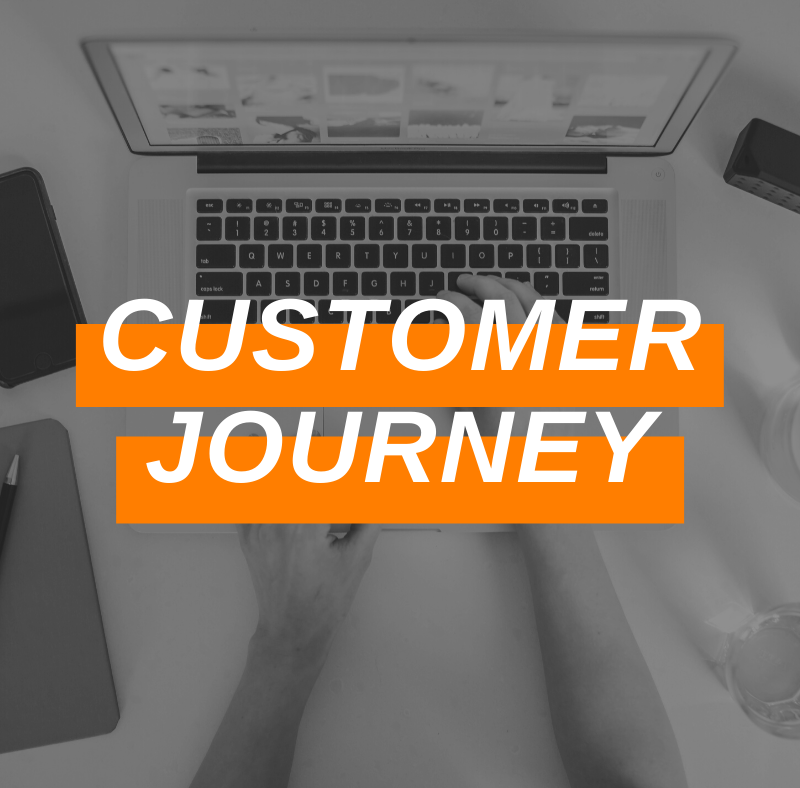
When marketing your business, it is essential to understand that there is a beginning, middle, and future of your client’s experience with you. In order to find the clients that you want, and turn them into advocates for your business, you need to understand the customer journey and align your marketing strategy to it.
What is the customer journey and what is the importance of it?
According to the Digital Marketing Institute, the customer (or buyer’s) journey can be defined as, “the process a consumer goes through before purchasing a product or service.” This process usually consists of five stages and understanding those five stages can help you spend your marketing efforts in the most efficient and effective way possible. One advertisement, one article, one video, one phone call isn’t all it’s going to take to make a sale and secure a loyal customer. The customer’s place in the buying process should indicate how you communicate to them. This takes intention, thought, and strategy. But that doesn’t mean it has to be complicated.
Let’s break it down.
Stages of the customer journey
Once you have a good idea of your ideal client, you can start looking at your business through their lens. There are 5 stages of each customer’s journey to buying a product or service.
Awareness – In the awareness stage, a customer becomes aware that they have a problem that needs to be solved and that you may potentially have a product or service that offers a solution.
Interest – In the interest stage, a customer begins to look for options to solve their problem. During this stage, the customer is researching, reading articles, and generally gathering information.
Consideration – In the consideration stage, a customer has found your brand and thinks that your product or service could be a solution to their problem.
Conversion – In the conversion stage, the customer has decided that your product or service is the best for them. They are ready to take action and purchase or subscribe.
Retention & Advocacy – In the retention and advocacy stage, a customer finds themselves satisfied with your product or service they may be looking for continued added value or offers. They will be looking for further evidence that they should stay loyal to your product or service. They may also want to advocate for your product or service and share with friends and family.
How to apply the customer journey to your marketing strategy
Now that you can see things through your customers’ eyes, it’s time to strategize how you’ll communicate with them in each stage.
Awareness – In this stage, you need to communicate a benefit and get your product or service out there in the mix of google searches, and advertisements. Ensure that your website and social media include keywords that your customers use to search for solutions to their problems or needs.
Interest – In this stage, it’s important to provide the materials your potential customer will need to find your product or service while searching for solutions. Ensure that you have blog articles, FAQs, and social media posts at the ready for when your potential customer goes searching.
Consideration – In this stage, you need to focus on bringing your company to the top of your customer’s choices. This is where you’ll need to use search engine optimization (SEO), retargeting ads, and following up with inquiries.
Conversion – In this stage, it’s time to convert a customer for a researcher into a customer or client. Provide a smooth process for converting the customer’s intent into action and giving them a sense of urgency. Make sure to send emails or texts confirming purchase or subscription and reassure the customer they can have confidence in their choice.
Retention/Advocacy – In this stage, continue to provide value, make the customer feel special, and add a personal touch. You can use social media ads, targeting customers who recently made conversions suggesting other products they might like. You can also do the same via email or text. Offer up promotions or sales that encourage loyalty. Engage with the customer on social media and encourage social sharing. Encourage the customer to share your product or service with friends.
Your marketing strategy doesn’t have to be complicated. Begin considering and incorporating intent around the customer journey in your marketing one stage at a time. Knowing and understanding your customer’s beginning, middle, and future with your business will arm you with the tools you need to provide the best possible experience and get satisfying results.







